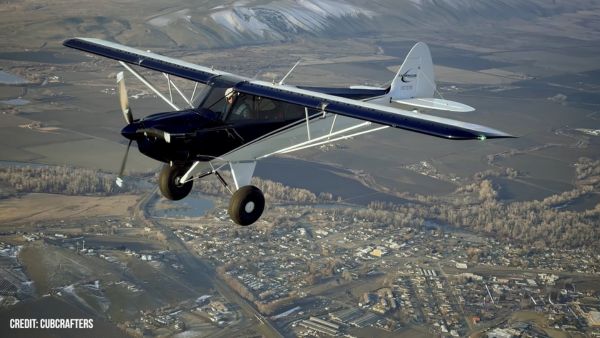Pilot Injured, Wasp Prototype Damaged, Project On Hold
The HeloWerks HX-1 Wasp helicopter was damaged May 6th in a
"freak landing accident" that sent test pilot, and company
president, Tony Pena to the hospital. Aero-News has received a
statement from company VP Bob Pegg, explaining the circumstances
and what's known so far of the consequences, of the mishap.
As Pena (right) was returning to Hampton Roads Executive Airport
in Chesapeake, VA from a test flight of approximately 30 minutes,
he inadvertently toggled the fuel solenoids off, instantly killing
the JFS turbine engine. The aircraft dropped like a stone.
"The helicopter was
already in its landing flare, so it was too low to do an
autorotation." Pegg said. (You need either airspeed or
altitude, preferably both, to safely autorotate to landing).
According to the statement, "[T]he helicopter dropped quickly to
the ground, striking tail-first and shattering the tail rotor. The
tail-strike caused one of the rotor blades to strike the tail boom.
The helicopter then made a very hard landing, remaining in an
upright position. The bows or cross-tubes connecting the landing
skids absorbed much of the impact before breaking. The force of the
impact continued upward in the helicopter, causing additional
fairing and skin damage. There was no fire or fuel
leakage."
The structure of the HX-1 prototype is hand-laid composite
monocoque. The tail boom is alloy.
"We estimate the front of the helicopter impacted the ground at
about 20 feet per second," Pegg said. (That's about the median
descent rate of a round military parachute). "We think the high
inertia of the rotor blades successfully decreased the
rate-of-descent. As designed, the helicopter's structure absorbed
much of the impact force and the cabin area remained relatively
intact."
The initial on-scene stage of the investigation is complete, and
the damaged helicopter is back with HeloWerks as of May 8. With
Tony Pena recovering from back injuries, "HeloWerks has not made a
detailed inspection or assessment of the helicopter," the company
statement said. At a glance, the aircraft appears to be
rebuildable.
We've followed the development of this experimental sport
helicopter with interest, and were present when it first hovered in
public, in 2005 (below) . Since then, Pena has continued to develop
and refine the turbine-powered, composite rotorcraft, as well as
expand the flight-test envelope. For example, our hovering pictures
show an open tail rotor; the latest redesign of the machine has a
guarded, almost fenestron-style tail rotor for increased
safety.
Pena once worked with the moribund Ultrasport helicopter company
before branching out on his own. Everyone who has seen the
HeloWerks HX-1 has commented on the composite workmanship and the
slick finish, including wild color-shifting paint stripes.
The plan was for HeloWerks to complete a thorough test flight
program while investors supported kit production; they expected the
kit to go for $70,000, a price competitive with other experimental
helicopters. Pena and Pegg were unwilling to use kit-builder
deposits to fund production; that Ponzi-scheme approach, once used
by another vendor whose two-seat helicopter never flew despite
brisk sales, has earned a bad name in the kit-helicopter world.
Now the fate of the project rests with Pena, who at press time
had been released from hospital and is at home, recuperating from
back injuries.
"The HX-1 WASP helicopter still appears to be a practical
two-place, turbine-powered experimental helicopter, ideal for
construction as a kit," Bob Pegg says optimistically. As more
information is available, he'll have it posted on the HeloWerks
website.
We've also asked him for updates on Tony Pena's recovery. Tony
is one of the unique characters in experimental aviation, and all
of us at Aero-News ask our readers to join us in best wishes and
prayers for his rapid return to flying status.
 SpaceX to Launch Inversion RAY Reentry Vehicle in Fall
SpaceX to Launch Inversion RAY Reentry Vehicle in Fall Aero-News: Quote of the Day (04.23.24)
Aero-News: Quote of the Day (04.23.24) Aero-News: Quote of the Day (04.20.24)
Aero-News: Quote of the Day (04.20.24) ANN's Daily Aero-Linx (04.20.24)
ANN's Daily Aero-Linx (04.20.24) Aero-News: Quote of the Day (04.21.24)
Aero-News: Quote of the Day (04.21.24)


